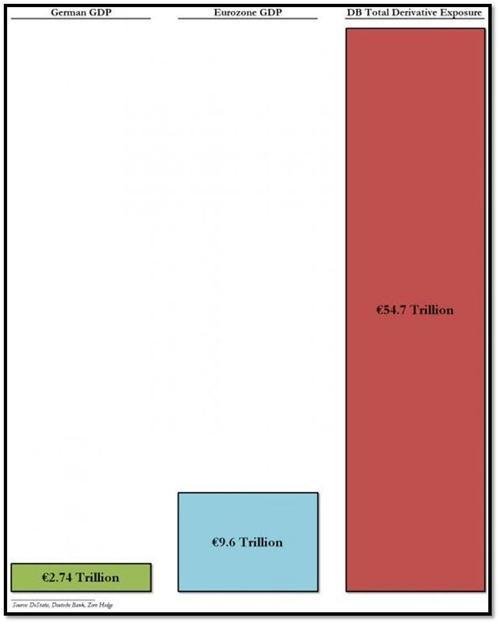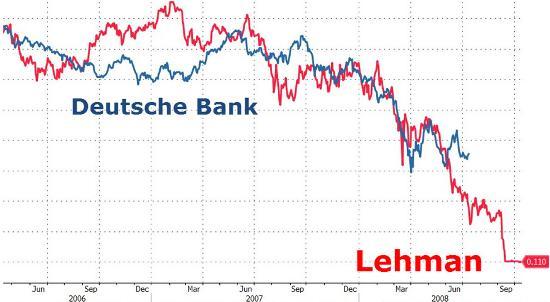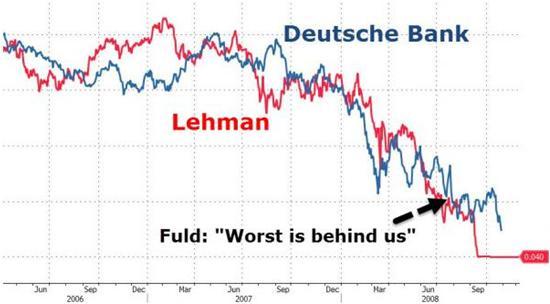Asset protection
Arithmetic is beautiful, elegant, and stunningly objective. Sometimes the truth of our own arithmetic is unpleasant…but if you can accurately identify the core problem to be solved, then you can get to work on actually solving it.
So let’s start with some typical retirement Arithmetic. If you need $50,000 of pre-tax income from your portfolio, at a 3% yield you need $1.67 million. At a 5.5% return (including current income AND capital gains), you need $909,090. The difference is significant, and affects when you can retire, or how much you can receive in retirement income.
Are you just going to sit back and take this “yield abuse” dished out on mature investors by Central Banks who’ve helped drive down interest rates, or recognize the problem and get it solved? Let’s get to work.
Having been indoctrinated for decades about how “safe” top-rated government bonds are, we find ourselves at or very near historic low yields, with lots of risk to your principal if you’re investing in long-term government debt. It’s happened before, at least a couple times in your grandparents’ lifetime. http://awealthofcommonsense.com/2015/03/the-blueprint-for-a-bond-bear-market/ The problem is real, the results are serious, only the timing is unknown.
As Jim Dines says, “Over-efforting creates countervailing forces,” so don’t ignore volatility of market prices simply because an investment has a high yield. Focus on total return, with yield (interest and dividends) as part of the overall return, along with prudent capital gains.
Below is a compilation of strategies for dealing with the low interest rate environment from the IWM stable of discretionary portfolio managers…not specific recommendations for the reader. All portfolios are managed within the framework of an Investment Policy Statement (IPS), which is a best practice among Fiduciaries. “Process provides protection,” and here’s an intelligent process:
- Step 1: Seek Higher Yielding Fixed Income alternatives to Government Bonds, with a focus on credit quality, including:
- Corporate Bonds, preferably under 5 years to maturity to be able to reinvest at higher rates in the future
- Preferred Shares with a guaranteed floor-rate reset provisions, ideally at rates 3% or more > 10 year govt. bond yields…and tax efficiency
- Commercial Mortgages, with Loan:Value ratios > 75%, and
- Structured Real Estate Trusts
- Step 2: Consider “higher than traditional” allocations to High-Yielding Equities. The old rules about no more than 30 or 40% equities in retirement are outdated. Consider the following:
- Blue-Chips are boring and effective. Utilities and other sectors like telecoms and consumer staples with stable cash flows and great dividend coverage are a start
- High Yielding Corporate Bonds behave more like Equities, so an ETF helps diversify away individual credit risk but not sector risk. HYG, JNK and XCB are a few well-known options that can fit the bill, but see notes on timing and currency below
- Alternatives like structured Asset-based Lending and Factoring pools yielding 6 to 8%
- Step 3: Dynamic Strategies. Markets are fluid and dynamic, and management of your portfolio should be as well:
- Writing Covered Calls on your blue-chip equities to add 1 or 2% to your current yield
- Active Currency management, sometimes to grow but most importantly to protect
- Buy volatile assets like stocks and high-yielding corporate during pullbacks, not just because you have cash
- Think of cash as a tactical asset class, not a strategic one, unless you’re already drawing income during retirement
- Lock in gains with a disciplined risk management framework. Be one of the strong hands who are selling to the late-comer weak hands when valuations are stretched. You never go broke by taking a profit, and great assets can be bought back later at lower prices.
Increasing the yield within your portfolio almost always decreases its volatility, and the less volatile your portfolio is, the less likely you are to do something that is financially destructive like selling volatile assets near panic lows.
And remember, everything included in your Investment Plan should be consistent with the Life Goals ™ expressed in your Wealth Management Plan.
Andrew H. Ruhland, CFP, CIM
Founder and President, Integrated Wealth Management Inc. in Calgary

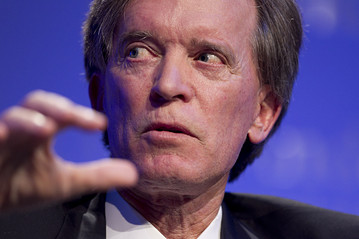 In one of his starkest warnings about the endgame of existing unorthodox, monetary policy, in his latest letter titled “Doubling Down”, Bill Gross repeats a familiar tune, warning that “our financial markets have become a Vegas/Macau/Monte Carlo casino, wagering that an unlimited supply of credit generated by central banks can successfully reflate global economies and reinvigorate nominal GDP growth to lower but acceptable norms in today’s highly levered world.”
In one of his starkest warnings about the endgame of existing unorthodox, monetary policy, in his latest letter titled “Doubling Down”, Bill Gross repeats a familiar tune, warning that “our financial markets have become a Vegas/Macau/Monte Carlo casino, wagering that an unlimited supply of credit generated by central banks can successfully reflate global economies and reinvigorate nominal GDP growth to lower but acceptable norms in today’s highly levered world.”
Once again he slams central bankers such as Carney and Yellen whom he describe as “Martingale gamblers” adding that “they do have an unlimited bankroll and that they can bet on the 31st, 32nd, or “whatever it takes” roll of the dice.
…related:

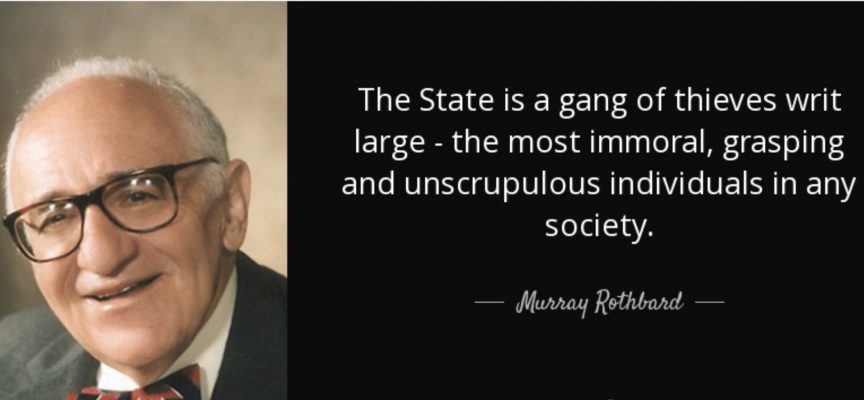 As the monetary madness continues, some of what you will read below is difficult to comprehend because it seems totally unimaginable.
As the monetary madness continues, some of what you will read below is difficult to comprehend because it seems totally unimaginable.
“If you have the power to print money, you’ll do it. Regardless of any ideologies or statements, that you should limit your counterfeit operations to three percent a year as the Friedmanites want to do. Basically you print it. You find reasons for it, you save banks, you save people, whatever, there are lot of reasons to print.” — Murray N. Rothbard
…also from Martin Armstrong:

 Steve Saville: “…there is no limit to how much new money the central bank can create.”
Steve Saville: “…there is no limit to how much new money the central bank can create.”
- The Federal Reserve – the central bank of the United States – issued over $16 trillion in loans, swaps, guarantees and more following the 2008 financial crisis. They also increased their balance sheet by nearly $4 trillion – thanks to their (digital) printing press. Much of that newly created currency was used to purchase dodgy bank debt that was worth little. “Money from nothing” is their specialty and they used it to “stimulate” the economy, a fantasy. The ECB and BOJ indulged in the same fantasy/scam.
- The Swiss Central Bank has created billions in new Swiss currency and used that currency to purchase the stocks of corporations. They created the currency from nothing, thereby diluting all existing Swiss currency units, and then purchased assets that have real value. Something from nothing is used by all central banks and is both a fantasy and a scam.
- If the Swiss Central Bank can create currency from nothing and purchase Facebook stock or gold mining stocks, other central banks can create currency from nothing and purchase physical gold from anyone who will sell the metal. Creating currency and using it to purchase gold is a great scam for those who can get away with it.
- A person speaking broken English called a homeowner. He claimed he was from “The Federal Government Grants and Treasury Department” and informed the homeowner that he had been randomly selected to receive a grant from the US government for $9,200. All the homeowner had to do was … something about his credit card … a scam.
- The US government owes nearly $20 trillion in official debt. Unfunded liabilities are considerably more. Total debt in the world, not counting unfunded liabilities, exceeds $200 trillion. If the debt must be “rolled over” but can never be paid, is it real? When will institutions no longer pretend that debt is real and reject the fantasy of repayment?
- If you borrow $10 billion from a friendly banker, spend it on jet airplanes, payoffs for your friends, and a well-deserved month vacationing at the gambling tables in Las Vegas or Wall Street, and have nothing left at the end of three months and no income to repay the debt, is the debt likely to be paid?
Certainly. You will take a $20 billion advance on a credit card.
Certainly. You will borrow $30 billion from another banker.
Certainly. You will borrow $15 billion from the same friendly banker and swear that you will balance your budget real soon.
Absolutely! It is an election year and we will believe anything in an election year.
Maybe not, but we do not discuss these topics in polite company.
- A homeowner received a recorded message from a man claiming to represent the Internal Revenue Service. He spoke in a very authoritarian manner as he informed the homeowner that the IRS had prepared a criminal indictment against the homeowner and that the homeowner or his attorney must call a certain phone number immediately or else the indictment would be filed. The recorded message suggested that non-compliance would result in dire consequences. What this would cost the homeowner was not mentioned in the recorded message but probably would be discussed at the call-back number as the scam progressed.
- A banker owns a vault. Inside that vault are 10,000 ounces of gold. He sells that gold, 100 ounces at a time, to 1,000 investors, assuming that nearly 100% will also pay the banker to safely store the gold instead of the buyers demanding delivery. In simple terms the banker has 10,000 ounces of gold and an IOU to the vault for 90,000 ounces of gold. The banker has an extra $100 million or so from investors for “paper gold” and everyone is temporarily happy. It appears to be a pleasing fantasy/scam.
- A homeowner received a recorded message that stated he was eligible for a $250,000 signature loan with no collateral. The money was supposedly available in two days. It sounded much too good to be true and had to be a scam because it did not originate from a central bank.
- The “War on Cash” has been mentioned often. If banks charge a fee to hold assets in an account (negative interest rates) the logical alternative is to reduce assets in bank accounts and increase cash and gold balances. Gold ownership is already discouraged in the media so the next target is cash – make it illegal or very difficult to hold cash so assets cannot be removed from the banking system. Previous examples of government initiated “wars” have been the “War on Poverty,” the “War on Drugs,” and the “War on Terrorism.” Their success rate has been low and the “War on Cash” will probably be equally unsuccessful.
- Wells Fargo opened 2 million largely unauthorized accounts, paid a huge fine, and fired 5,300 employees “related to bad behavior.” However the executive in charge “retired” with a bonus of nearly $125 million. This was NOT a fantasy. The executive in charge might not call it a scam but others probably would.
- Central bank policies that include ZIRP, the zero interest rate policy, and NIRP, the negative interest rate policy, do not help their economies, pension plans, insurance companies, nor the vast majority of the people. These policies appear to help the political and financial elite. Presidents, prime ministers, and central banks might not call ZIRP and NIRP a scam but others do.
In a world where fantasies and scams are ever-present and increasing, it is reassuring to know that gold and silver have been a store of value for thousands of years. As digital and paper currencies are further devalued during the next decade, gold and silver will substantially increase their purchasing power.
Gary Christenson
The Deviant Investor

Calling Wall Street’s banks stupid and dangerous is like calling the sun “big and warm.” It’s a clear understatement of an obvious fact. The same goes for calling Japan and China economically clueless. Their actions pretty much guarantee that they’ll ultimately enter some sort of death spiral.
Germany, meanwhile, is many things, but clueless and stupid aren’t normally on the list. So why is that country’s biggest bank causing nightmares for global policy makers and investors? Because – in a sign of just how close we are to the end of the fiat currency/fractional reserve banking era – Deutsche Bank is behaving in ways that would make executives at Lehman Brothers and Bear Stearns step back in alarm. It seems, for example, to have become a derivatives junkie. Like a Vegas high-roller who can’t stop raising his bets, DB’s exposure to this unregulated, largely off-balance-sheet market now exceeds not just its host country’s GDP, but that of its entire continent:
And it recently joined its Wall Street cousins-in-crime by attracting a $14 billion fine for mortgage fraud. This amount seems puny next to a trillions-with-a-T derivatives book, but it’s enough to force DB to raise capital at an extremely inauspicious time. Here’s an excerpt from a Bloomberg article on the bank’s — and Germany’s — plight:
Deutsche Bank’s Pain Is Germany’s Too
Berlin is trying to distance itself from Deutsche Bank and the threat of a $14 billion U.S. fine that would likely force the bank to raise capital.
This makes sense politically ahead of an election year. It also, effectively, calls the U.S. authorities’ bluff: if the fine is too big, German taxpayers won’t step in to help.
But the danger is that deepening investor concerns over the health of the country’s No. 1 bank spiral out of control — and circle right back to Berlin.
As unpalatable as it may be politically, the market sees Germany and Deutsche as joined at the hip.
You can see it in Deutsche Bank’s share price: it plumbed a record low on Monday after Focus magazine has reported Chancellor Angela Merkel ruled out state aid for the lender ahead of next year’s elections.
You can also see it in the lender’s credit-default swaps: both the German five-year sovereign CDS and Deutsche Banks’s five-year CDS have risen in tandem over past weeks.
Even Deutsche Bank’s own executives have commented on it. It’s almost a year to the day since Stefan Krause, then a member of the bank’s management board, noted how investors confused the lender with the Bundesbank and therefore saw “there was always an implicit state guarantee” when giving the bank funding.
Deutsche Bank is a truly systemic bank with about $2 trillion in assets, about two-thirds of Germany’s entire annual output. The weaker it becomes, the more investors will expect its home country to be on the hook.
Deutsche Bank said it’s determined to manage on its own and a capital increase isn’t currently on its agenda. Merkel’s government is attempting to stay out of the fray. On Monday, her chief spokesman said there were “no grounds” for speculation over state funding.
This last sentence illustrates the severity of the problem: When a government has to deny its intention to bail out a bank, a bail-out is not just possible but highly likely.
Zero Hedge has had some fun over the past year with a chart comparing DB’s share price with that of Lehman Brothers, a Wall Street bank that eventually collapsed, setting off the 2008-2009 conflagration. Here’s the chart from this summer:
And here it is after the most recent set of horrendous headlines:
DB’s saga seems to be nearing some kind of resolution, with exactly zero potential happy endings. Either it crashes, taking the European and maybe global financial system down with it, or Germany nationalizes it, potentially tipping the euro, dollar and yen into chaos.
Germany at the center of a global crisis, who would’ve thought it?
dollarcollapse.com



